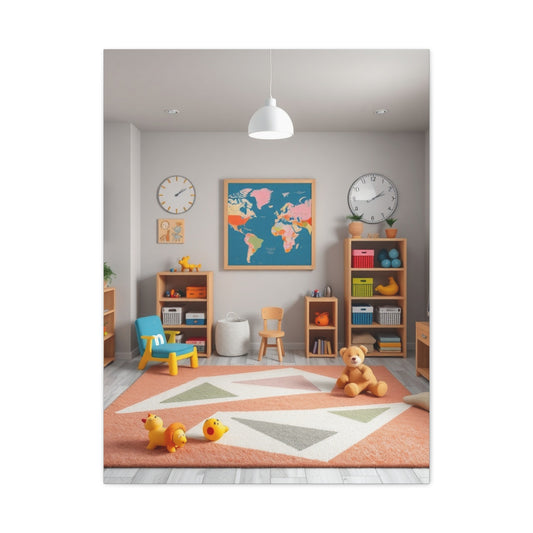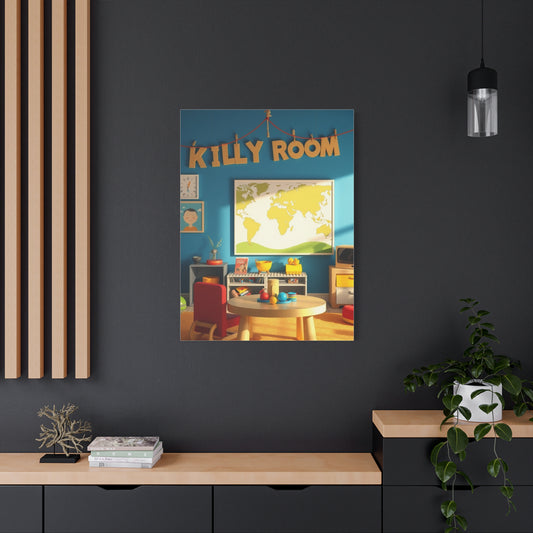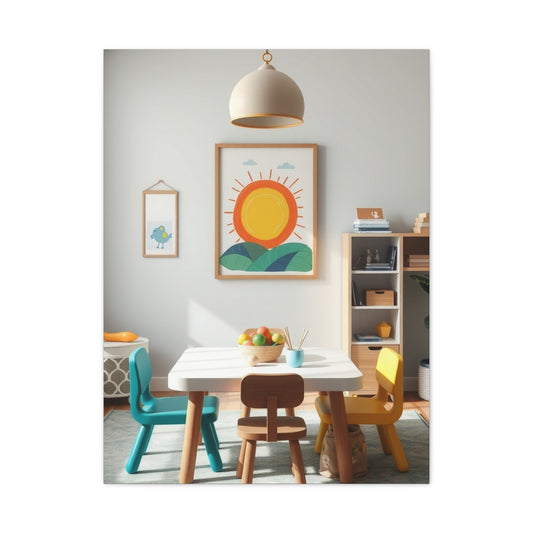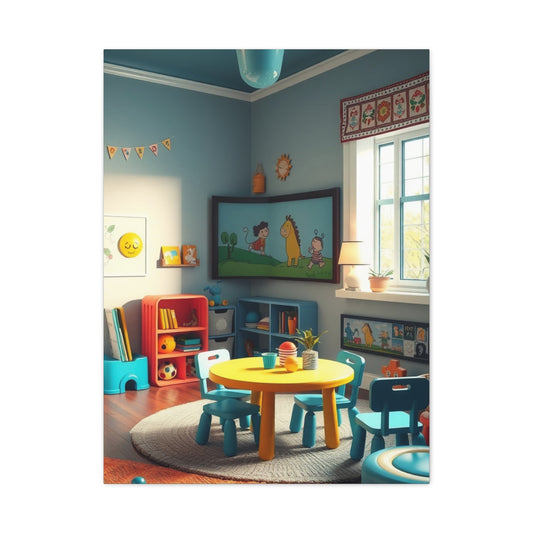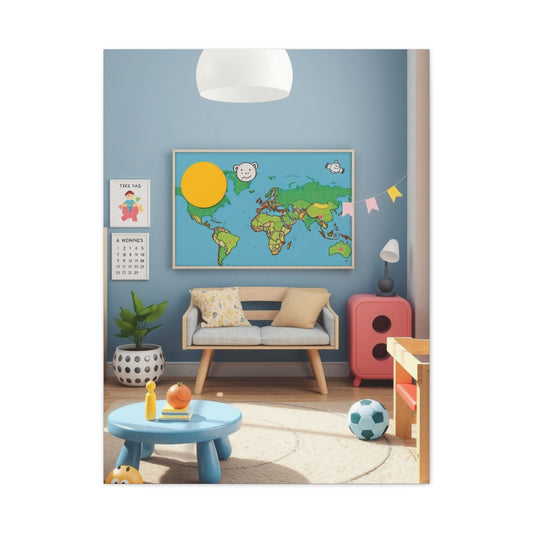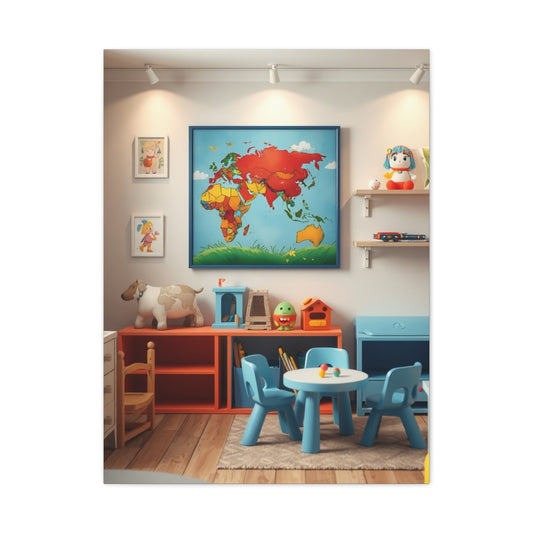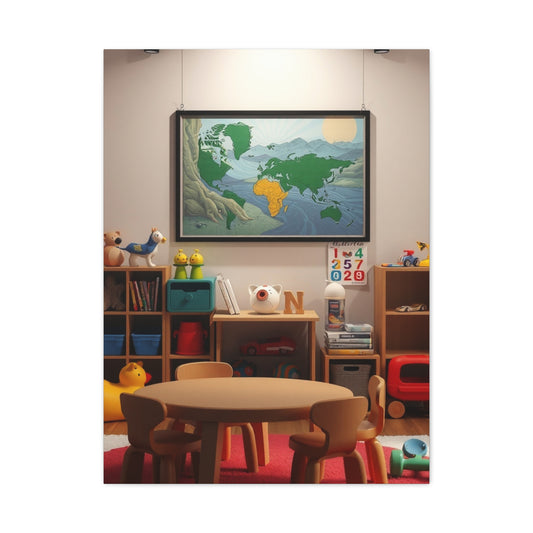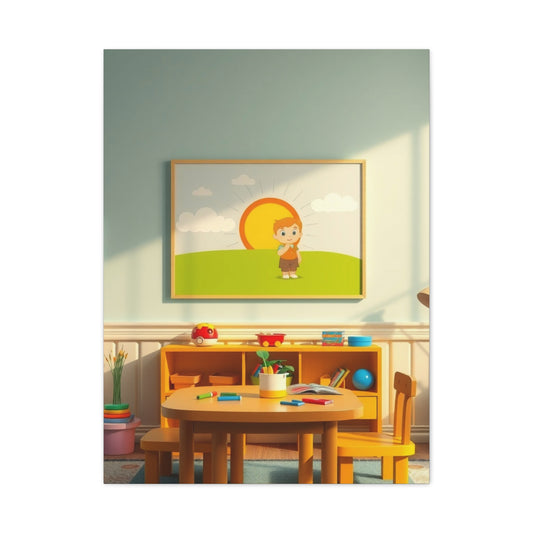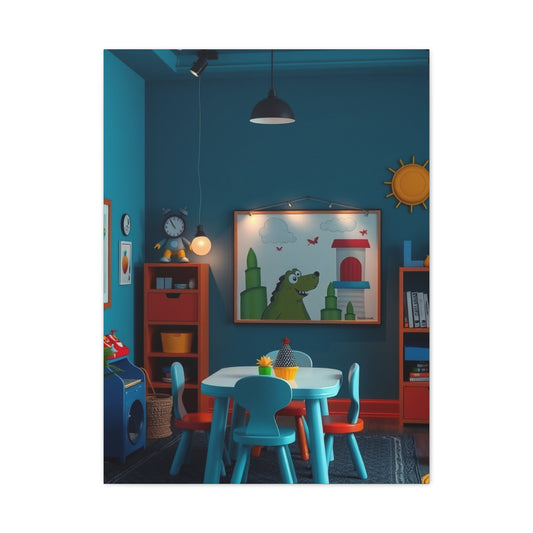-
Kids Playroom Art Luxury Canvas Wall Art & Canvas Print
Regular price From $141.23 USDRegular priceUnit price per -
Collection Kids Playroom Art Art Wall Art & Canvas Print
Regular price From $141.23 USDRegular priceUnit price per -
Supreme Kids Playroom Art Collection Wall Art & Canvas Print
Regular price From $141.23 USDRegular priceUnit price per -
Masterpiece Kids Playroom Art Vision Wall Art & Canvas Print
Regular price From $141.23 USDRegular priceUnit price per -
Kids Playroom Art Supreme Canvas Wall Art & Canvas Print
Regular price From $141.23 USDRegular priceUnit price per -
Kids Playroom Art Refined Canvas Wall Art & Canvas Print
Regular price From $141.23 USDRegular priceUnit price per -
Elite Kids Playroom Art Vision Wall Art & Canvas Print
Regular price From $141.23 USDRegular priceUnit price per -
Kids Playroom Art Supreme Gallery Wall Art & Canvas Print
Regular price From $141.23 USDRegular priceUnit price per -
Vision Kids Playroom Art Art Wall Art & Canvas Print
Regular price From $141.23 USDRegular priceUnit price per
Creative Kids Playroom Wall Decor Ideas: Transform Your Child's Space into a Wonderland
Creating an enchanting playroom environment requires thoughtful consideration of visual elements that will inspire creativity, imagination, and joy in your child's daily activities. Wall decoration serves as the foundation for establishing a stimulating atmosphere that encourages exploration while maintaining visual harmony throughout the space.
When designing a child's play area, parents often overlook the transformative power of well-chosen wall embellishments. These decorative elements serve multiple purposes beyond mere aesthetics, functioning as educational tools, conversation starters, and sources of daily inspiration for developing minds.
The key to successful playroom design lies in understanding how children interact with their environment. Young minds absorb visual information constantly, making wall decoration choices particularly influential in shaping their developmental experiences. Colors, patterns, and imagery all contribute to creating either a calming sanctuary or an energizing creative hub.
Modern playroom design embraces the concept of "visual storytelling" through wall art, where each piece contributes to a larger narrative about adventure, discovery, and personal growth. This approach transforms ordinary walls into interactive landscapes that spark imagination and encourage creative play scenarios.
Parents must balance several factors when selecting wall decorations: durability, safety, visual appeal, and developmental appropriateness. The most successful playroom designs incorporate elements that grow with the child, providing lasting value and continued engagement over time.
Consider the psychological impact of different decorative choices on your child's mood and behavior. Vibrant, energetic designs might inspire active play, while softer, more subdued options could promote quiet activities like reading or puzzles. Understanding these connections helps create intentional spaces that support various types of play and learning.
The positioning and arrangement of wall decorations significantly affects their impact on the overall room design. Strategic placement ensures maximum visual effect while maintaining practical considerations like furniture arrangement and traffic flow throughout the space.
Safety remains paramount when selecting and installing wall decorations in children's spaces. All items must be securely mounted, constructed from non-toxic materials, and positioned appropriately to prevent accidents while maintaining their decorative function.
Personalized Wall Art Solutions for Individual Expression
Customization offers unparalleled opportunities for creating meaningful, personal connections between children and their play environments. Personalized wall art serves as a constant reminder of individuality while fostering a sense of ownership and pride in their special space.
The beauty of customized wall decorations lies in their ability to reflect your child's unique personality, interests, and developmental stage. These pieces can incorporate favorite colors, beloved characters, meaningful dates, or family traditions, creating a truly one-of-a-kind environment.
Name-based decorations represent one of the most popular personalization options, allowing children to see their identity celebrated and displayed prominently in their space. These pieces can range from simple monograms to elaborate artistic interpretations incorporating various design elements and decorative motifs.
Birth date commemorations add sentimental value to playroom decorations while creating lasting keepsakes that children will treasure as they grow older. These pieces often combine numerical elements with artistic flourishes, creating visually appealing displays that serve both decorative and memorial purposes.
Family portrait integrations offer wonderful opportunities for creating connection between personal history and daily play experiences. These customized pieces might feature stylized representations of family members, pets, or significant locations that hold special meaning for your household.
Hobby and interest-based customizations allow wall art to evolve with your child's developing passions and preferences. Whether your child loves dinosaurs, space exploration, musical instruments, or sports, customized pieces can celebrate these interests while encouraging continued exploration and learning.
Growth chart integrations combine practical functionality with decorative appeal, allowing you to track your child's physical development while maintaining the room's aesthetic cohesion. These pieces often incorporate whimsical design elements that make measurement time enjoyable rather than routine.
The production process for customized wall art typically involves collaboration between parents, children, and artists or designers. This collaborative approach ensures that the final product truly reflects the child's preferences while meeting practical requirements for display and durability.
Digital customization options have expanded significantly in recent years, allowing for greater flexibility in design options, color choices, and sizing considerations. These platforms often provide preview capabilities, allowing families to visualize their customized pieces before finalizing orders.
Contemporary Design Movements in Children's Space Decoration
Modern design trends in children's playroom decoration reflect broader cultural shifts toward inclusivity, sustainability, and developmental awareness. Contemporary approaches emphasize creating spaces that support various learning styles while maintaining visual sophistication suitable for family homes.
Minimalist movements have influenced children's space design, promoting cleaner lines, simplified color palettes, and carefully curated decorative elements. This approach reduces visual overwhelm while focusing attention on high-quality, meaningful pieces that serve multiple functions.
Scandinavian design principles emphasize natural materials, neutral colors, and functional beauty in children's spaces. These approaches create calming environments that promote concentration while maintaining sufficient visual interest to engage young minds effectively.
Bohemian influences introduce eclectic mixing of patterns, textures, and cultural elements, creating rich visual tapestries that celebrate diversity and creativity. These designs often incorporate global artistic traditions, exposing children to various cultural aesthetic approaches.
Industrial design elements bring urban sophistication to playroom environments through exposed structural features, metal accents, and utilitarian design principles. These approaches create unique visual contrasts that appeal to older children while maintaining playful elements for younger family members.
Retro revivals incorporate vintage design elements from various decades, creating nostalgic atmospheres that appeal to parents while introducing children to different historical aesthetic periods. These designs often feature bold geometric patterns, vintage color schemes, and classic decorative motifs.
Sustainable design movements prioritize environmentally conscious material choices, locally sourced products, and long-lasting durability in children's space decoration. These approaches teach environmental responsibility while creating beautiful, healthy spaces for play and learning.
Gender-neutral design trends move away from traditional color coding and stereotypical imagery, creating inclusive spaces that welcome all children regardless of gender identity or expression. These approaches expand creative possibilities while promoting equality and acceptance.
Biophilic design principles integrate natural elements, organic shapes, and nature-inspired color palettes to create connections between indoor spaces and the natural world. These approaches support children's inherent connection to nature while promoting calm, restorative environments.
Geometric Patterns and Shape-Based Decorative Elements
Geometric patterns serve multiple functions in playroom wall decoration, providing visual interest while supporting early mathematical concept development through pattern recognition, shape identification, and spatial reasoning exercises. These decorative elements can be both beautiful and educationally valuable.
Triangle-based designs create dynamic visual movement while introducing children to one of the most fundamental geometric shapes. These patterns can be arranged in various configurations, from simple repetitive borders to complex tessellations that create stunning visual effects.
Circle and oval motifs promote feelings of continuity, completeness, and harmony within playroom environments. These shapes often appear in bubble-like clusters, solar system arrangements, or abstract compositions that encourage imaginative interpretation and creative storytelling.
Square and rectangle patterns provide structural stability to wall compositions while supporting concepts of order, balance, and proportion. These shapes serve as excellent foundations for more complex geometric arrangements and can be easily integrated with other decorative elements.
Hexagonal patterns, inspired by natural formations like honeycombs, create sophisticated visual textures while introducing children to more advanced geometric concepts. These designs often work particularly well in modern or science-themed playroom environments.
Diamond and rhombus shapes add angular interest to wall compositions while creating optical illusions and visual depth. These patterns can be arranged in traditional quilting-inspired layouts or more contemporary geometric abstractions.
Polygon combinations allow for creative exploration of mathematical relationships while creating unique visual compositions. These arrangements can incorporate multiple shape types, sizes, and colors to create engaging, educational wall displays.
Three-dimensional geometric elements add physical depth to wall decorations, creating interactive surfaces that invite touch and exploration. These pieces might include raised shapes, cutout sections, or layered compositions that cast interesting shadows.
Color application within geometric patterns significantly affects their visual impact and psychological effects. Monochromatic schemes create sophisticated, calming environments, while multi-colored arrangements provide stimulating, energetic atmospheres that encourage active engagement.
Optimal Sizing Strategies for Maximum Visual Impact
Understanding proper sizing relationships between wall decorations and room dimensions ensures optimal visual balance while maximizing the impact of your decorative investments. Incorrect sizing can overwhelm small spaces or appear insignificant in larger rooms, diminishing their intended effect.
Proportional relationships between wall art and furniture pieces create visual harmony throughout the playroom environment. These relationships should consider both horizontal and vertical dimensions, ensuring that decorative elements complement rather than compete with functional room elements.
Single large statement pieces can serve as focal points that anchor entire room designs while providing dramatic visual impact. These pieces work particularly well in rooms with ample wall space and minimal furniture arrangements that might compete for attention.
Gallery wall arrangements allow for creative combinations of multiple smaller pieces, creating customized compositions that can evolve over time as children's interests and preferences develop. These arrangements require careful planning to achieve balanced, cohesive final results.
Vertical emphasis strategies work particularly well in rooms with high ceilings, drawing the eye upward and creating feelings of spaciousness and grandeur. These approaches often incorporate tall, narrow pieces or vertically stacked arrangements.
Horizontal emphasis approaches suit rooms with lower ceilings or wide wall expanses, creating feelings of breadth and stability. These arrangements often work well above furniture pieces or in hallway-like spaces within larger playrooms.
Scale progression techniques involve arranging pieces of gradually increasing or decreasing sizes to create visual rhythm and movement within wall compositions. These approaches can guide traffic flow and create natural focal point hierarchies.
Corner placement strategies maximize wall space utilization while creating intimate, cozy areas within larger playroom environments. These approaches often work well for reading nooks or quiet activity spaces that require more subdued decorative treatment.
Height considerations must account for children's eye levels at various developmental stages, ensuring that decorative elements remain visible and engaging as children grow taller over time.
Innovative Room Layout Concepts for Enhanced Play Experience
Thoughtful room layout planning maximizes both decorative impact and functional play space, creating environments that support various activity types while maintaining visual coherence throughout the area. Successful layouts balance aesthetic considerations with practical play requirements.
Zone-based organization divides playroom spaces into distinct areas designated for specific activity types: quiet reading corners, active play zones, creative art stations, and social gathering spaces. Wall decorations can help define these zones while maintaining overall design unity.
Traffic flow considerations ensure that children can move safely and efficiently throughout the playroom while maintaining clear sight lines to decorative elements. These planning approaches prevent accidents while maximizing the visual impact of wall art installations.
Flexible furniture arrangements accommodate changing play needs while allowing wall decorations to remain prominent design features. Moveable storage solutions and modular seating options provide adaptability without compromising decorative investments.
Natural light optimization ensures that wall decorations receive appropriate illumination throughout the day while preventing sun damage to valuable pieces. Window placement, artificial lighting, and reflective surfaces all contribute to optimal display conditions.
Storage integration solutions incorporate decorative elements into functional storage systems, maximizing space efficiency while maintaining aesthetic appeal. These approaches often feature decorated storage bins, artistic shelving systems, or decorative toy organization solutions.
Safety zone establishment identifies areas where wall decorations should be positioned higher or more securely to prevent damage during active play periods. These considerations are particularly important in rooms shared by children of different ages with varying play styles.
Acoustic considerations account for sound absorption and reflection properties of different wall decoration materials, creating comfortable audio environments that support various play activities without creating excessive noise levels.
Growth accommodation strategies ensure that room layouts can evolve with children's changing needs and preferences while maintaining the integrity of decorative investments. These approaches often feature adjustable mounting systems and flexible arrangement options.
Color Theory and Psychology in Playroom Design
Color selection profoundly influences mood, behavior, and cognitive function in children's play environments, making understanding of color psychology essential for creating optimal playroom atmospheres. Different colors evoke distinct emotional responses while supporting various types of play and learning activities.
Warm color families, including reds, oranges, and yellows, typically promote energy, enthusiasm, and social interaction. These colors work well in active play areas where physical movement and group activities are encouraged, though they should be balanced with cooler tones to prevent overstimulation.
Cool color families, encompassing blues, greens, and purples, generally promote calm, concentration, and introspection. These colors suit quiet activity areas, reading nooks, and spaces designed for focused, individual play or learning activities.
Neutral color foundations provide versatile backgrounds that allow colorful toys, books, and activities to become the primary sources of visual stimulation. These approaches prevent color competition while maintaining sophisticated aesthetic appeal suitable for family homes.
Monochromatic schemes utilize various shades and tints of a single color family to create cohesive, sophisticated environments. These approaches work particularly well when combined with varied textures and patterns to maintain visual interest.
Complementary color combinations use opposite colors on the color wheel to create vibrant, energetic contrasts that stimulate visual attention and cognitive engagement. These approaches require careful balance to avoid overwhelming young viewers.
Analogous color schemes incorporate neighboring colors on the color wheel to create harmonious, flowing transitions throughout the playroom environment. These approaches promote feelings of unity and continuity while maintaining sufficient visual variety.
Triadic color schemes use three evenly spaced colors on the color wheel to create balanced, dynamic compositions that offer both harmony and contrast. These approaches provide excellent opportunities for creating visually engaging yet cohesive playroom designs.
Color temperature considerations account for the psychological effects of warm versus cool lighting on color perception throughout different times of day. These factors influence how wall decorations appear and how children respond to their environment during various play periods.
Thematic Design Approaches for Immersive Play Environments
Thematic room design creates cohesive, immersive environments that transport children to different worlds while supporting imaginative play scenarios. These approaches require careful coordination of all decorative elements to maintain believable, engaging atmospheric effects.
Adventure themes incorporate elements of exploration, discovery, and outdoor excitement through maps, compass motifs, camping imagery, and natural landscape representations. These designs encourage active play while fostering appreciation for nature and adventure.
Fantasy themes draw inspiration from fairy tales, mythology, and imaginative literature to create magical environments filled with castles, dragons, unicorns, and enchanted forests. These designs support storytelling activities while encouraging creative expression.
Space exploration themes celebrate scientific discovery and cosmic wonder through planetary imagery, rocket ships, astronaut figures, and stellar representations. These designs combine entertainment with educational content, promoting STEM interest and curiosity about the universe.
Underwater themes transform playrooms into oceanic wonderlands featuring marine life, coral reefs, sunken treasures, and submarine adventures. These designs often incorporate blue color schemes and flowing, organic shapes that evoke aquatic environments.
Transportation themes celebrate various modes of travel through trains, planes, automobiles, boats, and other vehicles. These designs often appeal particularly to younger children while supporting discussions about different cultures, geography, and transportation systems.
Animal kingdom themes showcase the diversity of wildlife through safari scenes, farm settings, jungle environments, or arctic landscapes. These designs promote environmental awareness while supporting zoological learning and appreciation for biodiversity.
Superhero themes incorporate elements of heroism, justice, and extraordinary abilities through comic book aesthetics, bold graphics, and action-oriented imagery. These designs often feature vibrant colors and dynamic compositions that reflect the energy of superhero narratives.
Historical period themes transport children to different eras through medieval castles, Wild West settings, ancient civilizations, or other historical contexts. These designs combine entertainment with historical education, promoting cultural awareness and temporal understanding.
Cultural and Educational Integration Through Wall Art
Educational wall decorations serve dual purposes by enhancing room aesthetics while supporting learning objectives across various academic disciplines. These pieces transform playroom walls into interactive learning laboratories that encourage exploration and discovery.
Geographic learning opportunities arise through world maps, country flags, landmark representations, and cultural imagery that expose children to global diversity while supporting social studies education. These decorations promote cultural awareness and geographic literacy.
Scientific concept illustrations introduce principles of physics, chemistry, biology, and earth science through visually appealing representations of natural phenomena, scientific processes, and biological systems. These pieces make abstract concepts more accessible and engaging for young learners.
Mathematical concept reinforcement occurs through number lines, geometric shape displays, pattern examples, and visual problem-solving illustrations that support numeracy development while maintaining decorative appeal. These pieces make mathematical learning more approachable and enjoyable.
Language development support comes through alphabet displays, vocabulary illustrations, storytelling imagery, and multicultural text examples that promote literacy while celebrating linguistic diversity. These decorations encourage reading and communication skill development.
Historical timeline representations help children understand chronological relationships, cause-and-effect connections, and cultural evolution through visually organized historical information displays. These pieces make history more tangible and relatable for young learners.
Artistic movement exhibitions expose children to various artistic styles, cultural aesthetic traditions, and creative expression methods through curated collections of artistic reproductions or inspired original works. These displays promote aesthetic appreciation and creative inspiration.
Music and rhythm visualizations incorporate musical notation, instrument illustrations, cultural music traditions, and sound wave representations that support musical education while adding dynamic visual elements to playroom walls.
Environmental awareness promotion occurs through nature scenes, conservation messages, recycling information, and ecological system illustrations that teach environmental responsibility while creating beautiful, meaningful wall displays.
Safety Considerations and Child-Friendly Installation Methods
Safety remains the paramount concern when installing wall decorations in children's play environments, requiring careful consideration of mounting methods, material selection, and positioning strategies that prevent accidents while maintaining decorative effectiveness.
Secure mounting systems ensure that wall decorations remain firmly attached even during vigorous play activities that might create vibrations or impacts. Professional installation often provides the most reliable mounting solutions for valuable or heavy decorative pieces.
Non-toxic material verification confirms that all wall decoration components meet safety standards for children's products, preventing exposure to harmful chemicals or substances that might cause health problems through direct contact or air quality degradation.
Rounded corner requirements eliminate sharp edges that could cause cuts or puncture wounds during accidental contact. All wall decorations should feature smooth, child-safe edges that minimize injury risks while maintaining aesthetic appeal.
Height placement strategies position potentially hazardous or fragile decorative elements beyond children's reach while maintaining their visual impact and decorative function. These approaches prevent damage to valuable pieces while ensuring child safety.
Breakage prevention measures incorporate shatterproof materials, protective barriers, or alternative mounting methods that eliminate risks associated with broken glass, ceramic, or other fragile decorative elements commonly used in adult spaces.
Electrical safety considerations apply to illuminated wall decorations, ensuring proper wiring, appropriate electrical ratings, and safe switch placement that prevents electrocution risks while providing desired lighting effects for decorative elements.
Fire safety compliance ensures that all decorative materials meet flame resistance standards while maintaining proper clearances from heat sources, electrical components, or other potential ignition sources within the playroom environment.
Regular maintenance protocols establish inspection schedules and maintenance procedures that identify potential safety hazards before they become problematic, ensuring continued safe enjoyment of decorative elements throughout their useful lives.
Seasonal Decoration Strategies for Year-Round Appeal
Seasonal decoration approaches allow playroom environments to evolve throughout the year, maintaining visual freshness while celebrating cultural traditions and natural cycles that help children understand temporal relationships and cultural significance.
Spring themes incorporate renewal, growth, and fresh beginnings through floral motifs, baby animal imagery, pastel color schemes, and garden representations that celebrate the awakening natural world while promoting themes of growth and development.
Summer celebrations feature bright, energetic designs incorporating sunshine, beach scenes, outdoor activities, and vacation imagery that capture the season's spirit while encouraging active play and outdoor appreciation during warmer months.
Autumn transitions introduce harvest themes, changing leaf colors, woodland creatures, and cozy indoor imagery that reflect the season's transformation while promoting appreciation for natural cycles and seasonal changes.
Winter wonderlands create magical atmospheres through snow scenes, winter sports imagery, holiday decorations, and cozy indoor settings that celebrate the season's unique beauty while promoting indoor activities during colder months.
Holiday integration allows for temporary decoration additions that celebrate various cultural and religious traditions without overwhelming permanent design elements. These approaches respect family traditions while maintaining overall design coherence.
Rotation systems enable easy switching between seasonal decoration sets, allowing families to refresh their playroom environments without major renovation projects or significant financial investments in entirely new decorative schemes.
Storage solutions for seasonal decorations ensure proper preservation of off-season items while maintaining organization and accessibility for easy rotation schedules. These systems prevent damage while maximizing storage efficiency.
Cultural celebration accommodation allows for integration of various cultural holidays and traditions that reflect family heritage or community diversity, promoting cultural awareness while maintaining inclusive, welcoming environments for all family members and guests.
Interactive and Multifunctional Wall Decoration Options
Interactive wall decorations transform passive viewing experiences into engaging, hands-on activities that promote learning, creativity, and physical development while serving traditional aesthetic functions within playroom environments.
Magnetic surfaces create versatile interaction opportunities through removable letters, numbers, shapes, and artistic elements that children can arrange and rearrange to create various learning activities, artistic compositions, or organizational systems.
Chalkboard and whiteboard sections provide drawing surfaces that encourage artistic expression, educational activities, and creative communication while serving as decorative elements when not actively in use for creative projects.
Texture exploration panels incorporate various materials, fabrics, and surface treatments that invite tactile investigation while supporting sensory development and providing therapeutic benefits for children with sensory processing preferences.
Pocket systems create storage and display opportunities for rotating collections of artwork, photographs, achievement certificates, or seasonal decorative elements that personalize spaces while maintaining organizational functionality.
Growth measurement integration combines decorative elements with practical height tracking capabilities, creating attractive alternatives to traditional growth charts while maintaining accuracy and visual appeal.
Activity centers incorporate game elements, puzzle components, or learning stations directly into wall decoration designs, maximizing space efficiency while providing structured activity options that complement free play opportunities.
Sound integration elements include musical components, noise-making elements, or acoustic features that add auditory dimensions to visual displays while supporting musical development and sensory exploration.
Lighting integration incorporates illumination elements that enhance decorative appeal while providing functional lighting for specific activities, creating dramatic effects, or supporting various play scenarios throughout different times of day.
Decoration Solutions and DIY Options
Creative, budget-friendly decoration approaches enable families to create beautiful, engaging playroom environments without significant financial investments, utilizing readily available materials, craft supplies, and creative techniques to achieve professional-quality results.
Printable art resources provide access to high-quality decorative designs that can be printed at home or local print shops, offering professional aesthetics at fraction of custom artwork costs while allowing for easy replacement or rotation.
Craft supply utilization transforms inexpensive materials like cardboard, fabric scraps, paint samples, and household items into unique decorative elements that reflect family creativity while providing engaging craft projects for older children.
Repurposing strategies give new life to existing household items, furniture pieces, or decorative elements through creative modification, painting, or reconfiguration that creates unique, personalized decorative solutions.
Community resource utilization accesses free or low-cost materials through community art centers, recycling programs, fabric shops' remnant sections, or educational institution surplus sales that provide quality materials at reduced costs.
Seasonal craft projects create temporary decorative elements that celebrate holidays, seasons, or special events while providing family bonding opportunities and creative skill development for children of various ages.
Group crafting initiatives coordinate with other families, playgroups, or community organizations to share costs, materials, and creative ideas while creating larger quantities of decorative elements through collaborative efforts.
Photography integration utilizes family photos, vacation images, or children's artistic creations as primary decorative elements, creating personalized, meaningful displays that celebrate family experiences while providing cost-effective decoration solutions.
Natural material collection incorporates found objects from nature walks, beach trips, or outdoor adventures into decorative displays that connect indoor spaces with outdoor experiences while providing free, unique decorative elements.
Maintenance and Longevity Strategies for Wall Decorations
Proper maintenance procedures ensure that wall decorations retain their aesthetic appeal, structural integrity, and safety characteristics throughout extended use periods, maximizing the return on decorative investments while maintaining healthy playroom environments.
Cleaning protocols establish regular maintenance schedules appropriate for different decoration materials, ensuring removal of dust, fingerprints, and other accumulations that diminish visual appeal while preventing long-term damage to decorative surfaces.
Damage prevention strategies identify potential threats to wall decorations and implement protective measures that reduce risks from normal play activities, environmental factors, or accidental impacts that commonly occur in active playroom environments.
Rotation schedules prevent excessive exposure, fading, or wear patterns by periodically moving decorative elements to different positions or temporarily storing pieces to extend their useful lives while maintaining visual variety.
Environmental control measures regulate temperature, humidity, and light exposure levels that affect decoration longevity, preventing damage from moisture, heat, UV radiation, or extreme temperature fluctuations that commonly occur in family homes.
Repair techniques address common types of damage that affect different decoration materials, enabling families to restore damaged pieces rather than replacing them entirely, reducing costs while maintaining decorative continuity.
Storage systems protect temporarily unused decorative elements from damage, dust, or loss while maintaining organization and accessibility for easy retrieval when rotation schedules or seasonal changes require decorative updates.
Quality assessment criteria help families evaluate the condition of existing decorations, determining when replacement becomes necessary and identifying pieces that require immediate attention to prevent safety hazards or further deterioration.
Warranty and protection considerations guide purchasing decisions toward products that offer guarantees, replacement programs, or protective treatments that extend useful lives while providing recourse for premature failures or manufacturing defects.
Professional Design Services vs. DIY Approaches
Understanding the advantages and limitations of professional design services versus do-it-yourself approaches helps families make informed decisions about decoration strategies that align with their budgets, skills, and desired outcomes for playroom projects.
Professional design consultation provides expert guidance on color selection, space planning, safety considerations, and aesthetic coordination that ensures cohesive, sophisticated results while avoiding common decorating mistakes that waste time and money.
Skilled installation services ensure proper mounting, electrical work, and safety compliance while providing warranties and insurance coverage that protect families from installation-related problems or accidents that might occur with amateur installation attempts.
Custom artwork commissioning creates unique, personalized pieces that perfectly match specific requirements, preferences, and space constraints while providing original art pieces that cannot be duplicated in other homes or commercial installations.
Design software utilization enables professional designers to create realistic previews and space planning solutions that help families visualize proposed changes before making financial commitments to specific decorative approaches or products.
DIY skill development provides families with creative capabilities, cost savings, and personal satisfaction while creating opportunities for family bonding and skill-building activities that extend beyond immediate decorating projects.
Time investment comparisons consider the hours required for research, shopping, preparation, execution, and cleanup associated with DIY projects versus the efficiency and expertise provided by professional services.
Cost-benefit analysis evaluates total project expenses including materials, tools, time investment, and potential mistake corrections for DIY approaches compared to professional service fees and guaranteed results.
Hybrid approach opportunities combine professional guidance for planning and complex installations with DIY execution for simpler elements, maximizing both cost savings and professional quality while building family skills and involvement.
Modern Playroom Wall Decoration
Digital integration possibilities expand traditional wall decoration concepts through interactive displays, programmable lighting, and smart home connectivity that create dynamic, responsive environments that adapt to different activities, times of day, or user preferences.
Interactive projection systems transform wall surfaces into dynamic displays capable of showing educational content, games, artistic presentations, or entertainment programs that respond to user interaction while maintaining traditional wall decoration functions when inactive.
Smart lighting integration enables automated color changes, brightness adjustments, and lighting effects that enhance wall decorations while supporting different activities, creating ambiance, or providing functional illumination that adapts to daily schedules and usage patterns.
Digital photo frame networks display rotating collections of family photos, children's artwork, educational content, or seasonal imagery that keeps wall displays fresh and current while reducing physical storage requirements for traditional printed materials.
Sound system integration provides audio accompaniment for visual displays, creating immersive environments that support themed play, educational activities, or relaxation periods while maintaining volume controls appropriate for family home use.
Motion sensor activation creates responsive environments that react to children's presence and movement, triggering lighting effects, sound responses, or display changes that add interactive elements to static decorative displays.
Mobile device connectivity allows parents and children to control various room elements through smartphone apps, enabling easy customization of lighting, displays, or audio elements without requiring physical access to control panels or switches.
Energy efficiency considerations ensure that technological integrations consume minimal electrical power while providing maximum functionality, reducing operating costs while supporting environmental responsibility goals for family homes.
Safety and security protocols protect technological systems from damage, unauthorized access, or inappropriate content while ensuring that all electronic components meet safety standards for children's environments and provide reliable, trouble-free operation.
Future-Proofing Playroom Designs for Growing Children
Adaptable design strategies create playroom environments that evolve gracefully with children's changing interests, developmental stages, and physical growth, maximizing the longevity of decorative investments while maintaining relevant, engaging spaces throughout childhood.
Modular system planning incorporates flexible, reconfigurable elements that can be rearranged, expanded, or modified as children's needs change, reducing the necessity for complete redecoration while maintaining fresh, current appearances.
Age-appropriate transition planning anticipates the developmental milestones and interest changes that commonly occur during different childhood stages, preparing decoration strategies that can accommodate these transitions without major disruption or expense.
Gender-neutral foundation approaches create decorative bases that remain appropriate regardless of changing gender expression or identity exploration that commonly occurs during adolescent development periods.
Interest evolution accommodation recognizes that children's hobbies, preferences, and passions change over time, implementing decoration strategies that can incorporate new interests while maintaining overall design coherence and aesthetic appeal.
Storage expansion planning anticipates increasing toy collections, book libraries, art supplies, and personal belongings that accumulate as children grow, ensuring adequate storage solutions that maintain organization and visual appeal.
Furniture scaling considerations account for changing furniture requirements as children grow taller and require larger seating, sleeping, and activity surfaces while maintaining proportional relationships with existing wall decorations.
Space utilization optimization maximizes room functionality for changing activity requirements, from infant play areas to teenage study spaces, while maintaining decorative elements that support various usage patterns throughout childhood development.
Investment protection strategies prioritize high-quality, durable decorative elements that can withstand extended use periods while maintaining their aesthetic appeal, ensuring that initial investments continue providing value throughout children's changing developmental stages.
Conclusion:
The journey of creating an exceptional playroom environment through thoughtful wall decoration represents far more than simple interior design choices. These decisions shape the backdrop against which countless childhood memories will unfold, influence daily experiences that contribute to personal development, and create lasting impressions that children will carry with them throughout their lives.
Successful playroom wall decoration requires careful balance between aesthetic appeal, functional requirements, safety considerations, and developmental appropriateness. The most effective approaches recognize that children's spaces serve multiple purposes: they must inspire creativity while providing comfort, encourage learning while remaining fun, and maintain safety while allowing freedom of expression and movement.
The investment in quality wall decorations pays dividends that extend far beyond their immediate visual impact. These elements contribute to cognitive development through color recognition, pattern identification, and visual processing skill development. They support emotional regulation by creating environments that promote either calm focus or energetic engagement, depending on the intended activities and your child's particular needs.
Educational integration transforms playroom walls into learning laboratories where children absorb information naturally through environmental exposure. Geography maps spark curiosity about distant places, alphabet displays reinforce literacy development, and mathematical concepts become accessible through visual representation. These passive learning opportunities supplement formal education while making knowledge acquisition feel natural and enjoyable.
The psychological impact of well-designed playroom environments cannot be overstated. Children who grow up in thoughtfully decorated spaces develop aesthetic appreciation, visual literacy, and creative confidence that serve them throughout their lives. They learn to value beauty, understand design principles, and appreciate the effort required to create harmonious, functional environments.
Cultural exposure through diverse artistic representations, multicultural imagery, and varied aesthetic traditions broadens children's worldviews while promoting acceptance and appreciation of human diversity. These early experiences establish foundations for cultural competency and global awareness that become increasingly important in our interconnected world.
Safety considerations, while sometimes challenging to balance with aesthetic goals, demonstrate care and responsibility that children internalize as personal values. When parents prioritize safety without sacrificing beauty, children learn that protective care and aesthetic pleasure can coexist harmoniously, informing their future decision-making processes.
The collaborative process of selecting, installing, and maintaining wall decorations provides valuable family bonding opportunities while teaching children about planning, decision-making, and care for personal belongings. These experiences contribute to responsibility development and pride in personal spaces that encourages continued investment in environmental care.
Budget-conscious approaches demonstrate resourcefulness and creativity while teaching children that beautiful environments can be created through imagination, effort, and thoughtful planning rather than expensive purchases alone. These lessons promote financial literacy and creative problem-solving skills that benefit children throughout their lives.
The maintenance and evolution of playroom decorations over time teaches children about change, growth, and adaptation while demonstrating that spaces can be refreshed and renewed without complete replacement. These experiences prepare children for future living situations where they must adapt to changing circumstances while maintaining personal comfort and aesthetic satisfaction.
Technology integration, when implemented thoughtfully, prepares children for increasingly digital futures while maintaining connection to traditional aesthetic appreciation. The balance between digital and physical decorative elements teaches children to value both technological capabilities and tangible beauty, preparing them for complex decision-making in their adult lives.
Professional versus DIY decision-making processes teach children about resource allocation, skill assessment, and collaborative relationships while demonstrating that seeking expert help represents wisdom rather than weakness when facing complex challenges that exceed personal capabilities.
The long-term impact of childhood environmental experiences extends well beyond the immediate playroom years. Adults often describe vivid memories of childhood spaces that influenced their aesthetic preferences, career choices, or personal values. The wall decorations you choose today may inspire future artists, scientists, travelers, or entrepreneurs by exposing them to images, concepts, and possibilities that capture their imagination during formative developmental periods.
Quality playroom wall decorations represent investments in childhood happiness, developmental support, and future potential. They create environments where children feel valued, stimulated, and secure while providing daily reminders of family love and commitment to their growth and wellbeing.
The process of creating these special spaces offers parents opportunities to express creativity, demonstrate care, and participate actively in their children's daily experiences. The pride and satisfaction derived from creating beautiful, functional environments that delight children and support their development provides lasting rewards that justify the time, effort, and resources invested in these important projects.
As you embark on or continue your playroom decoration journey, remember that perfection is not the goal. Rather, strive to create spaces that reflect your family's values, support your children's development, and provide daily joy and inspiration. The most successful playroom designs evolve over time, adapt to changing needs, and reflect the unique personalities and preferences of the children who use them.
The memories created in thoughtfully decorated playrooms become treasured family stories that children share with their own families in future years. These spaces serve as launching pads for imagination, creativity, and exploration while providing secure bases where children can retreat, recharge, and feel completely accepted and loved.
Your investment in creating exceptional playroom wall decoration represents a gift to your children that extends far beyond childhood. These experiences shape aesthetic sensibilities, demonstrate the importance of environmental beauty, and create positive associations with home, family, and personal space that influence their future choices and experiences throughout their lives.

